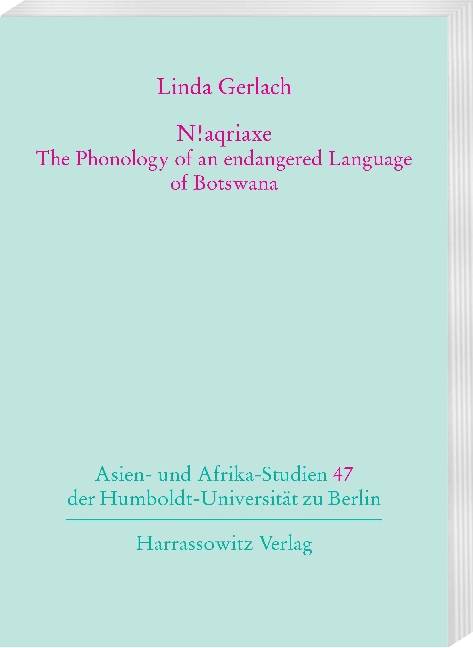
- Afhalen na 1 uur in een winkel met voorraad
- Gratis thuislevering in België vanaf € 30
- Ruim aanbod met 7 miljoen producten
- Afhalen na 1 uur in een winkel met voorraad
- Gratis thuislevering in België vanaf € 30
- Ruim aanbod met 7 miljoen producten
Omschrijving
N!aqriaxe is a variety of a language called 'Amkoe. 'Amkoe belongs to one of the three Khoisan language families and is spoken at the southern fringe of the Kalahari in Botswana. The N!aqriaxe variety is severely endangered as are the other two varieties of 'Amkoe, Hoan and Sasi. West 'Amkoe (subsuming N!aqriaxe and Hoan) counts approximately 50 speakers and Sasi possibly another 50 speakers. Exact numbers are not available. Most speakers are around 70 years old and the children do not learn the language anymore. 'Amkoe is spoken by former hunter-gatherer populations that nowadays live mostly scattered in villages within an area of a few hundred square kilometers. In linguistic terms, 'Amkoe has only been "discovered" in the 1970s and projects aiming at a more thorough documentation and classification of the language mostly started in the 2010s. Until today, the language is only partly documented. The aim of the present book is to fill the first gap by providing a description of the phonology of N!aqriaxe, supplemented with some phonetic data, and comparing it to the other two 'Amkoe varieties whenever these differ significantly. Furthermore it also includes some sociolinguistic information about the speakers and their history as well as a study of how the contact between speakers of Khoisan languages belonging to different language families influenced the phonological and phonetic characteristics of these languages.
Specificaties
Betrokkenen
- Auteur(s):
- Uitgeverij:
Inhoud
- Aantal bladzijden:
- 358
- Taal:
- Engels
- Reeks:
- Reeksnummer:
- nr. 47
Eigenschappen
- Productcode (EAN):
- 9783447107242
- Verschijningsdatum:
- 31/12/2016
- Uitvoering:
- Paperback
- Formaat:
- Trade paperback (VS)
- Afmetingen:
- 170 mm x 240 mm
- Gewicht:
- 906 g

Alleen bij Standaard Boekhandel
+ 306 punten op je klantenkaart van Standaard Boekhandel
Beoordelingen
We publiceren alleen reviews die voldoen aan de voorwaarden voor reviews. Bekijk onze voorwaarden voor reviews.










